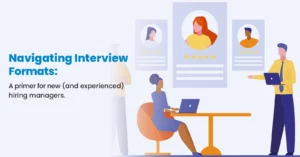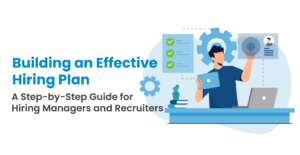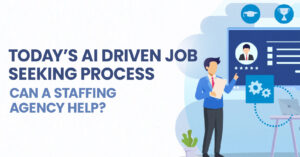The contingent workforce has been trending upward for a long time now, fuelled by the expanding gig economy, and supercharged by the pandemic and the Great Resignation.
Nearly every industry imaginable has turned to contingent workers amid ongoing labor shortages, and contingent workers today supply everything from delivery services to technology solutions.
Approximately 80% of U.S. corporations plan to expand their contingent workforce in the coming years, according to a survey cited in a recent Forbes article; the same report notes additional research that found more than 60% of business leaders view Independent Contractors as critical to their workforces.
Why is hiring contingent workers an attractive workforce strategy?
Organizations have different reasons for adding contingent workers to their overall workforce. Flexibility and cost savings are among the leading benefits of working with contingent workers.
Additionally, contingent workers often bring specialized skills to companies that in-house teams do not possess and are hard to find.
While this type of engagement model can benefit both businesses and contractors, integrating contingent workers into a company’s labor force requires care. Different laws apply to contingent workers and full-time employees, and employers need to ensure proper classification of their employee and non-employee workers or become vulnerable to a variety of risks.
When to engage a contingent worker vs full time-employee
Project scope
Do you have a specific project that needs to be completed or is there a need for ongoing work? Contingent workers, and their highly specialized skills, are ideal for projects. Once the project is completed and paid for, the organization has the flexibility to continue engaging the worker, or simply ending the engagement with no further obligation.
Project start time
Do you need to ramp up quickly or has important work suddenly come your way? The talent acquisition process to hire a full-time worker takes an average of 27 working days, and in many cases, much longer. For an employer to engage a full-time employee, a hiring team must source, screen and then onboard the new worker. On the other hand, an experienced contingent worker comes with lower cost of acquisition, less administrative overhead, and shorter lead times to begin working.
Demand for services
Is your business experiencing a fluctuation in demands for services? A contingent worker doesn’t come with ties of an employment agreement, the term of which is usually indefinite. Rather, contingent workers can be engaged on an as needed basis. If there is a sudden surge or drop in demand for services, contingent work can be throttled up or down to meet those demand levels.
Specialty skills and skills gaps
Are you noticing project delays due to skills shortages in your internal teams? Do you have a project or work that needs to be done requiring a niche set of skills? A contingent workforce is typically made up of highly talented workers with a specific skill set who can hit the ground running and fill skill gaps in your existing workforce.
Cost
Full time hiring can be quite costly. Can your organization afford the dollars incurred from a bad hire? According to the U.S. Department of Labor, the average cost of a bad hire is up to 30% of the employee’s first-year earnings. The costs are broken down as they relate to hiring, retention and pay. One of the largest benefits to engaging contingent workers is cost savings with 34% of business leaders planning to replace full-time employees with more flexible, temporary talent in 2022 as a cost saving measure.
Additionally, Employers aren’t required to pay contingent workers for breaks or non-productive labor. Typically, depending on how the contingent worker is engaged – either by a third party or directly sourced through the organization, these workers also aren’t entitled to the same types of benefits afforded full-time employees, such as holiday pay, sick leave or vacation days. Contracting a contingent worker for a project means clients only pay them for as long as they need them.
Interestingly though, while it can help organizations reduce their costs, it is often the case that contingent workers receive higher hourly rates than their employee counterparts. So, while contractors do not enjoy the same benefits as employees, such as vacation and sick leave, the hourly or daily rate makes contract work appealing.
Other factors to consider when engaging a contingent worker vs. full-time employee
Risk identification and mitigation
Engaging contingent workers also come with a range of financial, brand, legal and tax considerations. And keeping up with compliance is essential to avoiding hefty fines, penalties and damages to an organization’s employer brand.
Hiring employees, too, comes with their own set of risks, as employers typically have greater obligations to their employees than Independent Contractors. Being aware of the differences in these different relationships, and the associated risks is crucial.
Staffing agencies can typically help organizations identify and manage risk related to their contingent workforce, so it may be worth speaking to an advisor to gain an understanding of how to best manage your non-employee workforce.
Retaining talent
Retaining talent amid the Great Resignation is just as important as engaging new talent. As discussed in a recentHarvard Business Review article, full-time workers also breed loyalty, a trait essential to organizations on multiple fronts. Companies value loyal employees, and full-time workers who remain with an organization for an extended period generate loyalty among their coworkers. This, in turn, is attractive to candidates looking for a steady, full-time position.
Intellectual property and Internal Expertise
A balance between contractors and permanent employees will help you to retain intellectual property and knowledge of best practices inside your organization. Every organization needs to consider how it can build and manage systems to facilitate organizational growth, and one reason to consider an employee for a particular position may be because that position is connected to building long-term knowledge in the organization.
By contrast, contingent workers bring immense knowledge into organizations, but do not remain in the organization for as long. This means the challenge for organizations becomes to build a structure and capability to absorb and retain information, and evolve that into proprietary knowledge.
There is no one size fits all approach
There is no one-size-fits-all approach to balancing full-time employees and contingent workers in a company’s workforce. But some notable considerations can steer a business toward an optimal balance of loyal employees, and specialized contingent workers who are able to help deliver on critical projects in the organization.
The Re-Imagined Recruitment Playbook
Over the past two years, we have captured hard won lessons learned across thousands of worker hiring engagements by our team of professional recruiters and distilled them into practical ideas that you can start using immediately. The Re-Imagined Recruitment Playbook is a step-by-step guide to help source, screen, select, onboard and retain talent in the New World of Work.




